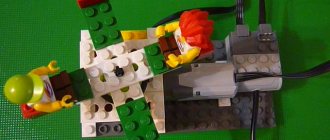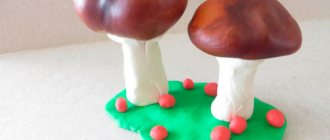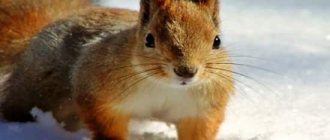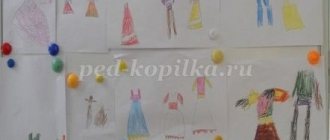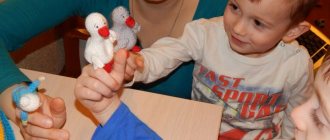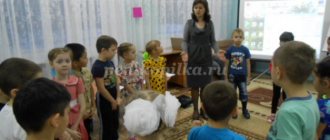Dramatization of the safety tale “Kolobok” Video
Elena Kuznetsova
Dramatization of the safety tale “Kolobok” Video
The main activity of preschool age is play. In it, the child learns about the world, gets acquainted with the emotional sphere, develops and learns to control it, and communicates with other children. All these natural needs, as well as certain moral ideas, communication skills and creative abilities can be improved through various kinds of dramatizations - dramatization of fairy tales in kindergarten .
fairy tales for dramatization in preschool educational institutions . Russian folk tales are instructive and have a simple language, which allows them to be used by almost all age categories of preschoolers. The dramatization of fairy tales is especially productive in the older group of kindergarten. This is due to the psychological characteristics of children aged 5-6 years.
Psychological characteristics of children in the senior group of kindergarten
By the age of five, a child already knows and can do a lot. At this age, memory is quite well developed. However, the most interesting things perceived on an emotional level are remembered more firmly. An older preschooler has a clear understanding of all types of emotions. He develops various feelings: curiosity, a sense of humor, surprise, a sense of beauty, pride, friendship, etc.
Children aged 5-6 years show creative activity in various fields of activity. The development of fantasy and imagination is often expressed in the composition of funny stories. With all this, the child is attentive to any comments from the adult and tries to act, guided by his advice.
The natural characteristics of an older preschooler create favorable conditions for successful performances.
Goals of dramatizing fairy tales in preschool educational institutions .
Turning to the dramatization of fairy tales allows the teacher to realize the main goals:
Educational. During preparation for the dramatization, children of the older group get acquainted with folk art, some properties of a fairy tale as a literary work, learn to analyze the character of the characters and their actions, and correlate the actions of the characters with real people.
Developmental. Dramatization helps develop imagination, attention, memory, emotional sphere, expressiveness of speech, improve communication and motor activity in their combination.
Educational. The dramatization of fairy tales fosters interest in literary works, folklore, and fairy tales of individual authors ; forms aesthetic taste, strengthens feelings of friendship, support and mutual assistance.
Dramatization of the fairy tale “Kolobok” with children of the second junior group. Summary of Direct Educational Activities with children of the second junior group. Educator: Kai Topic: “Dramatization of the fairy tale “Kolobok”.
"Safety lessons from Dasha." Dramatization for senior preschool age on the topic “Safety Rules for Children” Dramatization for senior preschool age on the topic: “Safety Rules for Children” “Safety Lessons from Dasha” Educator:.
Dramatization of the fairy tale “A ball of wool” for older children Morning. The house, yard, trees are visible. The rooster is crowing. It's dawn. Presenter - The night passed, the darkness was carried away, the cricket fell silent, the cockerel crowed. The night passed, the darkness.
Dramatization of the fairy tale “Kolobok” for the older group - for kids Goal: to arouse children’s interest in the fairy tale. IMG]/upload/blogs/detsad-841008-1530458301.jpg[/IMG] jpg[/IMG]. Goal: to arouse children's interest.
Dramatization of the fairy tale “The Yellow Side Gingerbread Man” Screenwriter and physical education instructor Anastasia Vasilievna Pushkareva Directors: teacher Irina Alekseevna Morozova.
Dramatization of the fairy tale “Kolobok the yellow side” Anastasia Pushkareva Dramatization of the fairy tale “Kolobok the yellow side” Screenwriter and physical education instructor Anastasia Vasilievna Pushkareva.
Theatrical activities in the preparatory group. Dramatization of the fairy tale in a new way “The Snow Bun” Goal: to create conditions for the development of children’s creative activity in theatrical activities. Develop the ability to be free and relaxed.
Source
Summary of direct educational activities on safety for the senior group
Summary of open direct educational activities for the senior group on the topic “Teaching the heroes of fairy tales about safety”
Goal: To consolidate children’s knowledge about safe behavior with a stranger through fairy tales. Educational objectives: 1. To consolidate children’s knowledge about safe behavior, to find a way out of dangerous situations based on Russian folk tales 2. To teach how to correctly answer questions about the content of fairy tales 3. To learn to express one’s attitude towards the characters, to evaluate their actions, to draw conclusions regarding behavior in dangerous situation. 4. Strengthen the skills of careful gluing. Developmental objectives: 1. Develop children’s speech activity, intonation expressiveness of speech, encourage them to enter into dialogue. 2. Develop memory and thinking 3. Develop the ability to understand the motives of behavior of fairy tale heroes. Educational objectives: 1. Cultivate the need to come to the aid of fairy-tale characters 2. Cultivate consistency of actions in the dramatization of a fairy tale Integration of educational areas : speech development, socio-communicative development, artistic and aesthetic development, physical development. Materials and equipment : A picture depicting the Far Away Kingdom of the Thirtieth State, pictures of fairy-tale characters and their shadows, pictures with correct and incorrect behavior with a stranger, an airplane - a letter, hats on the head - a bun, a fox, a wolf, kids (according to the number of children), red a hat, blank baby books (according to the number of children), glue, blank images with situations of rules of conduct with a stranger. Preliminary work: Reading fairy tales “Kolobok”, “Little Red Riding Hood”, “The Wolf and the Seven Little Goats”, conversations on fairy tales, dramatization of fairy tales, game - training “Stranger”, conversations on the topic “Stranger”, “Home Alone”.
Progress of GCD
1. Organizational moment “The sky is blue, the sun is clear, (stand holding hands; clasped hands - up) It’s good to live in the world! (shaking with clasped hands) Only unfortunate cases can darken joy. (they threaten) So that these misfortunes do not happen, (they threaten) We will repeat for clarity, (they throw up their hands) Let us remember, adults and children (clap to the beat of the words) Safety rules!” 2. Main part Educator: Today, I invite you to go on an unusual journey. Do you agree? (Yes) . And we will go to the Far Far Away Kingdom, the Thirtieth State. Educator: Which of you loves fairy tales? (Children's answers) Educator: Why do you love them? (They are interesting, magical, miracles happen and a lot of adventures happen). Educator: What do you guys think, why do they say this: “The fairy tale is a lie, but there’s a hint in it!” A lesson to good fellows"? (A fairy tale teaches children... teaches good things...) Educator: Indeed, together with the heroes of fairy tales, we find ourselves in amazing countries, travel with them, overcome difficulties, which means we learn to believe in goodness, overcome fear and failure. So, it's time for us to hit the road, are you ready!? We close our eyes and repeat after me: “We spun, we spun, we found ourselves in a fairy tale!” A picture is displayed (the thirtieth kingdom, the thirtieth kingdom with the shadow of fairy tale heroes)
Educator: Look, where are all the heroes of fairy tales? Is there only one shadow left of them? What do you think happened? (Children's assumptions) And here is an airplane and something is written on it. Shall we read it? “Hello, children, heroes from fairy tales are writing to you. We disappeared because we misbehaved in a fairy tale. Help us get back!” Fairy-tale characters
Educator: Well, what can we help? (Yes) Guess the riddle to find out the first fairy-tale hero: The barn is swept, The bottom of the barrel is scraped, It is mixed with sour cream, It is put into the stove. (Kolobok)
Educator: Remember how the fairy tale ended? (The bun was eaten by a fox) Where did it all happen? (In the forest) Kolobok was born and grew up in the forest? (No. Grandma baked it) But how did Kolobok end up in the forest? (He ran away) What rule did Kolobok break? (Run away, trusted the fox) Educator: That's right, you can't listen to a stranger and trust him. So for our hero to appear, it is necessary to replay the end of the fairy tale. ... let you be a fox, and ...... will be Kolobok. Dramatization of the fairy tale “Kolobok” Children wear hats of fairy tale heroes
Educator: Kolobok is rolling, a fox meets him: Fox: Kolobok, Kolobok, I will eat you! Gingerbread Man: Don't eat me, fox, I'll sing you a song I'm a Gingerbread Man, a Gingerbread Man, I'm scraping the boxes, I'm sweeping the bottom of the barrel, I'm mixing it with sour cream, I'm cold in the window. I left my grandfather, I left my grandmother, I left the hare, I left the wolf, I left the bear. And I’ll run away from you, fox! Fox: Nice song, bun! It’s just that I’m old and I can’t hear well. Sit on my tongue and sing it one more time! Educator: What should the bun do to prevent the fox from eating it? Children: Run away. The gingerbread man runs away. A gingerbread man appears in the picture.
Educator: Well done, children! Saved the bun. Listen to the following riddle: Grandmother loved the girl very much and gave her a red riding hood. The girl forgot her name. Well, tell me her name! Little Red Riding Hood
Educator: Where did Little Red Riding Hood go? (to grandmother) Who did she meet on her way? (Wolf) What did she tell the wolf? (where he goes, who he goes to, and how to get into the house) Is it possible to tell strangers your home address and what your name is? (No) And what happened to Little Red Riding Hood and Grandma? (The wolf ate them) Let's correct the situation and save Little Red Riding Hood and her grandmother. Let's …. you will be Little Red Riding Hood, and…..there will be a wolf. Dramatization of the fairy tale Little Red Riding Hood
Educator: Little Red Riding Hood went to her grandmother through the forest, and the Wolf met her. Wolf: Where are you going, Little Red Riding Hood? Little Red Riding Hood: I'm going to my grandmother. Wolf: Where does your grandmother live? Educator: Should Little Red Riding Hood start a conversation with the wolf (stranger)? (No) What should Little Red Riding Hood do? (to run away or outwit the wolf). Is it possible to deceive the wolf and tell him the address where the hunters live? (You can) What will you do Tanya? (I'll run away) Little Red Riding Hood runs away. A picture of Little Red Riding Hood appears.
Educator: Well done and saved Little Red Riding Hood!
Never, under any circumstances, tell a stranger your home address or your name. Now, let's check if you behave correctly. Game “Stomp, Clap” Children are shown pictures with correct and incorrect actions with a stranger; if correct, they clap, and if incorrect, they stomp. Educator: We listen to the following riddle: In this fairy tale there is a goat, nicknamed Dereza. And then there is, they say, “The Wolf and the Seven...!” (KIDS)
Educator: Where did the goat and her kids live? Children: There lived a goat with her kids in a house in the forest. Educator: How many kids did she have? Children: She had seven kids. Educator: Why did the goat go into the forest? Children: I went for milk. Educator: What song did the goat sing? Children: Little goats, guys! Open up, open up! Your mother came and brought milk; Educator: What voice did the goat sing in? Children: The goat sang in a thin voice. Educator: Let's sing in a thin voice. (Sing the goat song in chorus and individually) How did the wolf sing? Children: He sang in a thick voice. Educator: Let's sing in a thick voice. (Sing the goat song in chorus and individually) What did the kids answer the wolf? Children: We hear, we hear - this is not mother’s voice! Our mother sings in a thin voice and does not lament like that. Educator: What happened next? Children: The wolf deceived the kids and ate them. Educator: Guys, did your parents leave you at home alone? (Yes) And what did they tell you? (Do not open the door for anyone) That's right! Under no circumstances should you open the door to strangers. Let's help the kids play out a fairy tale. Distribution of roles Dramatization of the fairy tale “The Wolf and the Seven Little Goats”
Educator: As soon as the goat left, the wolf ran to the hut, knocked and sang in a thin voice.
Wolf: Little goats, guys! Open up, open up! Your mother came and brought milk. Educator : Shall we open the door? (No) What should I do? (Scream, call for help). Can you pretend that no one is home? (You can) Let's sit in silence, the wolf will think that no one is there and leave. If the wolf does not leave, you can offer the children another option - scream, call the police on number 02. Little goats: Help, save! The wolf wants to eat us! The last picture appears
Educator: Well done, and you saved the kids. Never open the door to a stranger, even if he seems to know your parents. Look, you and I helped all the fairy-tale heroes return to the fairy tale. Now we need to go back to kindergarten. We stand in a circle, hold hands, close our eyes and repeat after me. We spun, we spun, we found ourselves in kindergarten! Application of a baby book “Association “Stranger”” Educator : And now I suggest you make a baby book “Association “Stranger””, on your tables there are blank books and images with different situations from fairy tales and the behavior of a child when meeting a stranger, you need to correlate a situation from a fairy tale with a situation with a stranger. For example, a picture from the fairy tale “The Wolf and the Seven Little Goats”, where the little goats opened the door for the wolf, what kind of picture will we paste opposite this picture (where the child is looking through the peephole). 3. Final part Educator: Did you like our trip? How? Where have we been? What they were doing? What safety rules do the fairy tales “Kolobok”, “Little Red Riding Hood”, “The Wolf and the Seven Little Goats” teach us?
We recommend watching:
GCD summary in the senior group on familiarization with the outside world on the topic: Winter GCD summary on the formation of a healthy lifestyle in the senior group GCD summary on cognitive and speech development with elements of museum pedagogy in the senior group GCD synopsis on physical education in the senior group
Similar articles:
Abstract of GCD in the senior group on cognition on the topic “Furniture Factory”
Abstract of educational activities for cognition in the senior group of kindergarten on the topic “Russian folk toys”
Summary of a lesson on cognition in the senior group of kindergarten on the topic: Hearing organs
Conversation in the senior group of kindergarten on the topic: What are fabrics for?
Summary of a lesson on cognition in the senior group on the topic: My city Voronezh

